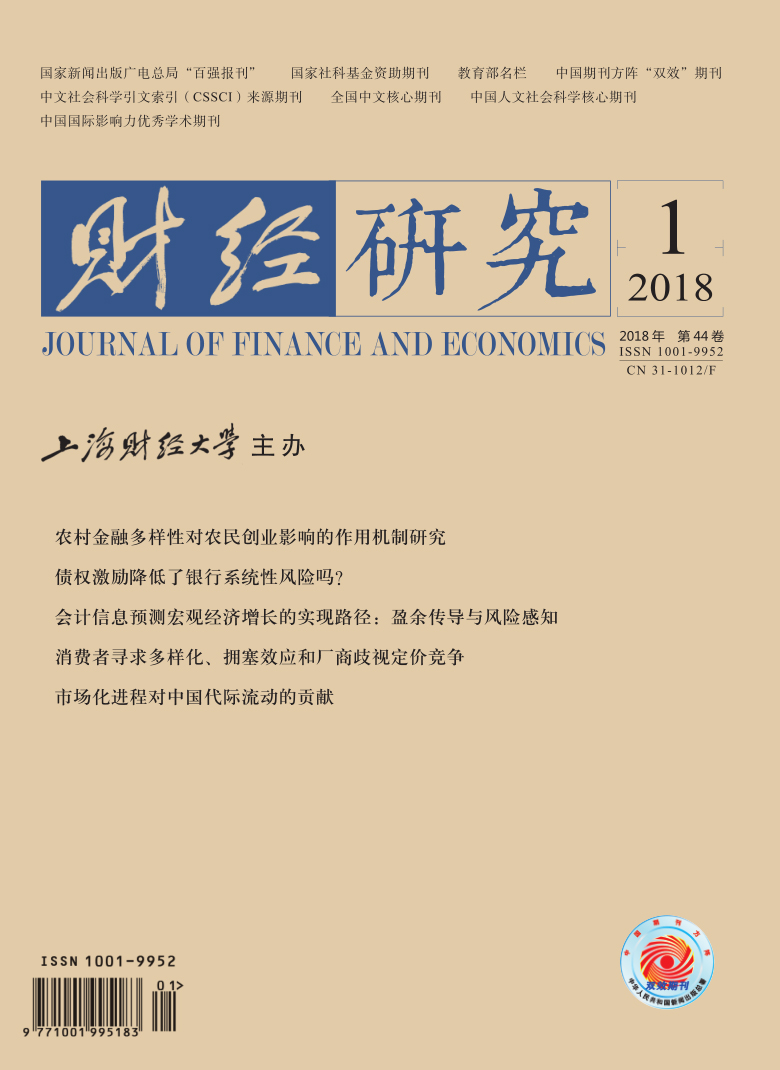In some industries with consumer variety-seeking and congestion effect, firms can often use discriminatory pricing scheme by consumer purchasing history. In this paper, we build up a two-stage game model to investigate this economic phenomenon. As for our research results, we can show that both market environmental factors, namely consumer variety-seeking and congestion effect, can lead to firms’ own market power, but the main reason for firm discriminatory pricing is consumer variety-seeking. After the purchase during the first phase, consumer variety-seeking leads to differences in consumers’ valuation of the products, and firms can effectively distinguish different consumer groups, leading to market segmentation and discriminatory pricing during the second phase. The firms offer discounting prices for loyal consumers, but charge new customers higher prices, trying to attract repeat purchases of old customers and avoid too much loss of old customers. Because the congestion effect on all consumers is consistent, it will not lead to the differences in consumers’ valuation of products, and it is impossible for firms to make discriminatory pricing. But the congestion effect can restrain the firms from reducing prices to attract consumers, and weaken the competition between the firms, resulting in the " tacit collusion” between oligarchic firms. In fact, we also find that both market environmental factors weaken price competition. Compared with uniform pricing, discriminatory pricing results in lower equilibrium prices during two phases, and both the equilibrium profits and social welfare are also lower, but consumers gain higher surplus. Further pricing strategy choice shows that discriminatory pricing based on consumer purchasing history selected by both two firms is an equilibrium result, leading to lower profits of two firms, thus they fall into the " prisoner’s dilemma”. This paper explores the general welfare standard and the competition policy about the discriminatory pricing based on consumer purchasing history. The discriminatory pricing based on consumer purchasing history belongs to the third-degree price discrimination. Discriminatory pricing does not increase the total quantities of goods, so total social welfare falls. In general, in an industry with consumer variety-seeking and congestion effect, there is very sufficient competition between firms, which have almost no market power, and firms’ pricing behavior is more benefcial to consumers. The loss of social welfare mainly comes from consumer variety-seeking; it is very difficult to understand the information of characteristics of consumers, and there is a great deal of information costs. For these reasons, we believe that the competition policy should allow firms to adopt such pricing strategies and should not make too much intervention. The antitrust authorities should be cautious, and only confirmed that firms with such a pricing strategy have a dominant market position, can it intervene in firm behavior.
 / Journals / Journal of Finance and Economics
/ Journals / Journal of Finance and EconomicsJournal of Finance and Economics
LiuYuanchun, Editor-in-Chief
ZhengChunrong, Vice Executive Editor-in-Chief
YaoLan BaoXiaohua HuangJun, Vice Editor-in-Chief
Consumer Variety-seeking, Congestion Effect and Firm Discriminatory Pricing Competition
Journal of Finance and Economics Vol. 44, Issue 01, pp. 100 - 112 (2018) DOI:10.16538/j.cnki.jfe.2018.01.008
Summary
References
Summary
[1]Hu Y H, Zhang J T. Oligopoly competitions in service industry with congestion and customer preference[J]. Journal of Systems Engineering, 2012, (3): 311-319. (In Chinese)
[2]Jiang C H. Competitive price discrimination by purchased-history with switching cost and network effects[J]. Economic Research Journal, 2010, (9): 55-66. (In Chinese)
[3]Jiang C H, Tang D X. Competitive dynamic discriminatory pricing and realization of competitive advantage: An analysis based on consumers’ variety-seeking behavior[J]. Journal of Management Sciences in China, 2012, (2): 48-57. (In Chinese)
[4]Acquisti A, Varian H R. Conditioning prices on purchase history[J]. Marketing Science, 2005, 24(3): 367-381.
[5]Ahlin C, Ahlin P D. Product differentiation under congestion or snobbery: Hotelling was right[J]. Economic Inquiry, 2013, 51(3): 1750-1763.
[6]Chen Y. Paying customers to switch[J]. Journal of Economics and Management Strategy, 1997, 6(4): 877-897.
[7]Fudenberg D, Tirole J. Customer poaching and brand switching[J]. RAND Journal of Economics, 2000, 31(4): 634-657.
[8]Jeuland A P. Brand preference over time: A partially deterministic operationalization of the notion of variety seeking[A]. Jain S. AMA research frontiers in marketing: Dialogues and directions[C]. Chicago: American Marketing Association, 1978.
[9]Klemperer P. The competitiveness of markets with switching costs[J]. RAND Journal of Economics, 1987, 18(1): 138-150.
[10]Kohlberg E. Equilibrium store locations when consumers minimize travel time plus waiting time[J]. Economics Letters, 1983, 11(3): 211-216.
[11]Palma A D, Leruth L. Congestion and game in capacity: A duopoly analysis in the presence of network externalities[J]. Annales d’Economie et de Statistique, 1989, (15/16): 389-407.
[12]Seetharaman P B, Che H. Price competition in markets with consumer variety seeking[J]. Marketing Science, 2009, 28(3): 516-525.
Cite this article
Jiang Chuanhai, Yang Wanzhong, Zhu Bei. Consumer Variety-seeking, Congestion Effect and Firm Discriminatory Pricing Competition[J]. Journal of Finance and Economics, 2018, 44(1): 100–112.
Export Citations as:
For




 7168
7168  7674
7674

